Most people, when they ride a bike, tuck their pelvis so the rear portion of their sitz bones rests on the seat. Then they lean over to reach the handlebars causing a lot of spine curvature. With the additional tension created from pushing the pedals and holding the handlebars, and the bouncing and jostling from the road, riding a bike this way can be a painful and harmful activity.
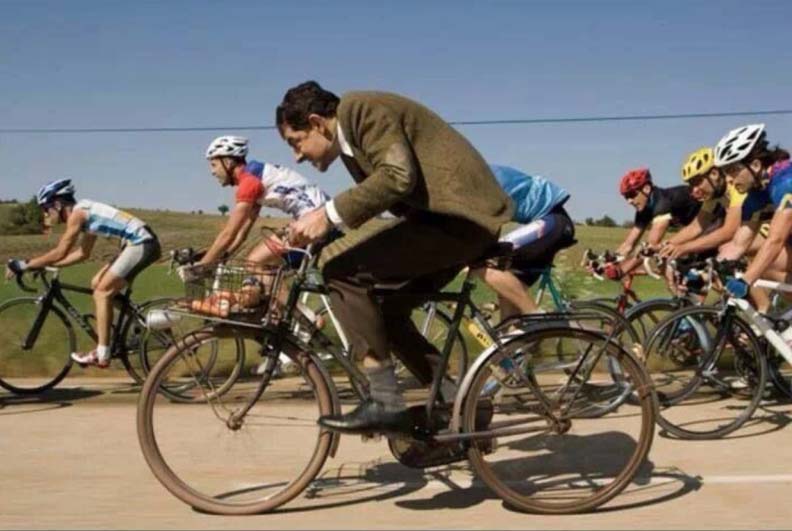
Many modern bike riders look like Mr. Bean when they ride a bike, sitting with an unnaturally curved spine.

Each of these modern-day bikers has a rounded spine and craned neck. Image courtesy John Matrix at bikelist.org.
With a few adjustments, riding a bike can be a harmonious and healthful activity. By using hiphinging and stacksitting, and by making sure you have the right bike and the right settings, you can enjoy this way of exercising and getting around. Here are the key things to look for in a bike frame:
Bike style: In some areas, road bikes and touring bikes—styles that require a deep bend to reach the handlebars—are very common. In other places, cruisers, hybrids, and flat-foot ‘comfort bikes’ are the norm. Pick a style that works best for you, but if you experience back pain, an upright model will likely more comfortable and conducive to good posture.
An additional advantage of an upright bike is that you won’t need much hamstring flexibility and back strength to maintain a J-spine. An upright bike allows you to stacksit on your seat with an easily maintained healthy neck position.
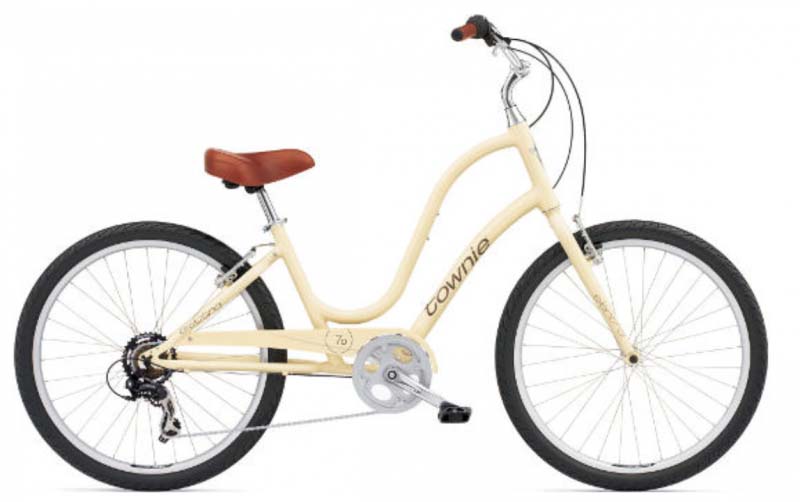
This comfort cruiser is ideal for maintaining a relaxed upright posture. It also has a low bar in the front that makes getting on and off the bike easy.
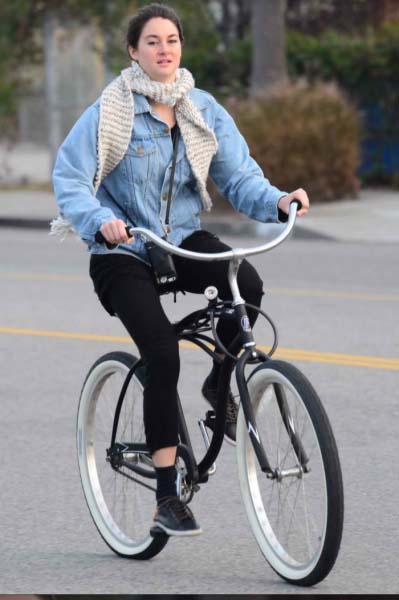
Shailene Woodley rides a bike with close-swooping handle bars, which make it easy to ride upright with the shoulders back.
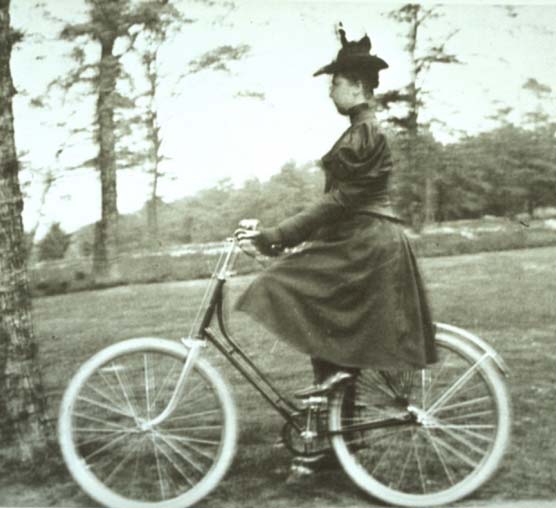
This woman from yesteryear demonstrates an excellent J-spine on a ‘comfort’ frame that allows her to stacksit and easily keep her shoulders back.
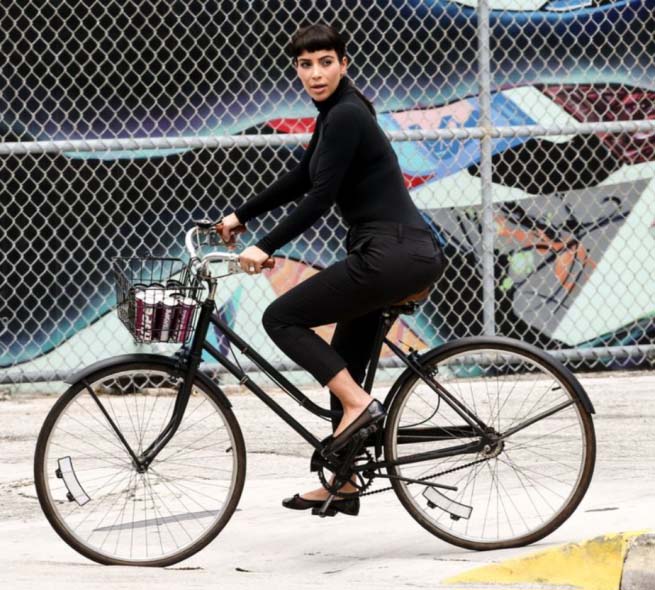
Here Kim Kardashian rides an upright with cruiser handlebars. With a slight hiphinge, she is able to maintain healthy spine and neck alignment. This position doesn’t require great hamstring flexibility; it does requires slightly more work than stacksitting.
For those who prefer a more aerodynamic racing style, you will need to do a deep hiphinge. It can be challenging to find a seat that allows for appropriate and comfortable pelvic anteversion. I will write more about bike seats in an upcoming sequel post.
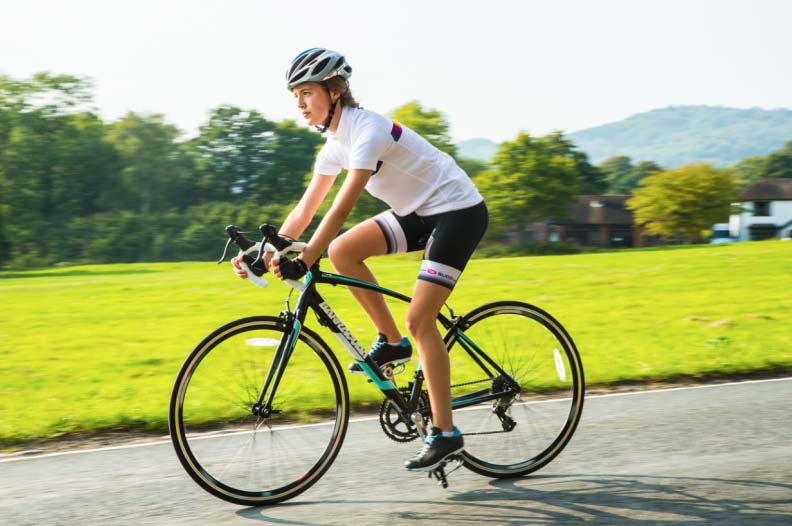
To get closer to a racing position with your torso more horizontal, you will need a pronounced hiphinge to maintain a straight spine. This woman hiphinges quite a bit, but stops short of ideal and therefore has a slightly rounded lumbar spine. Ideally, you pivot your head upwards on the neck rather than crane the neck to look ahead (more on this in a future post).
Frame size: For good bicycling posture, you will need an appropriately sized bike frame that allows you to maintain a relaxed shoulder and neck position, and allows you to touch your feet to the ground from your seat. The handlebars need to be within reach without your shoulders pulling forward.
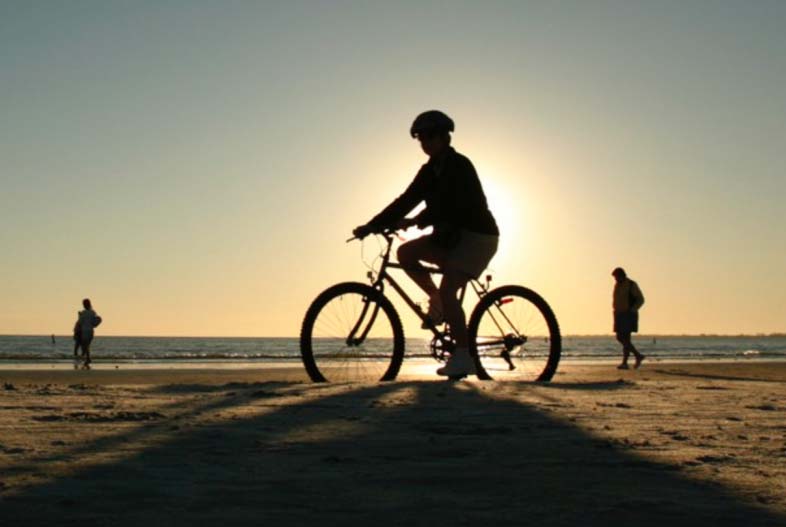
With a little effort, you can find just the right size and style frame to keep you straight and pain-free!
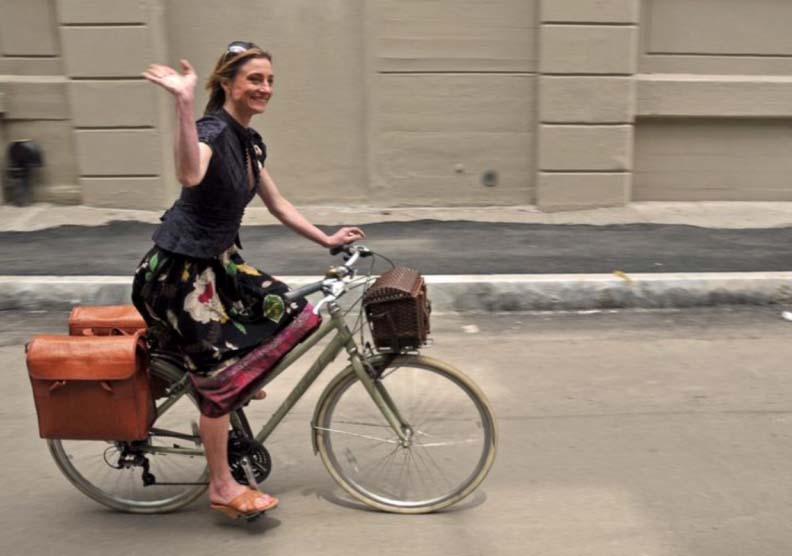 With With good posture and a good bike fit, biking is a pleasure to observe and experience.
With With good posture and a good bike fit, biking is a pleasure to observe and experience.
The more upright you can be on your bike, the less work you will have to do to maintain your J-spine.
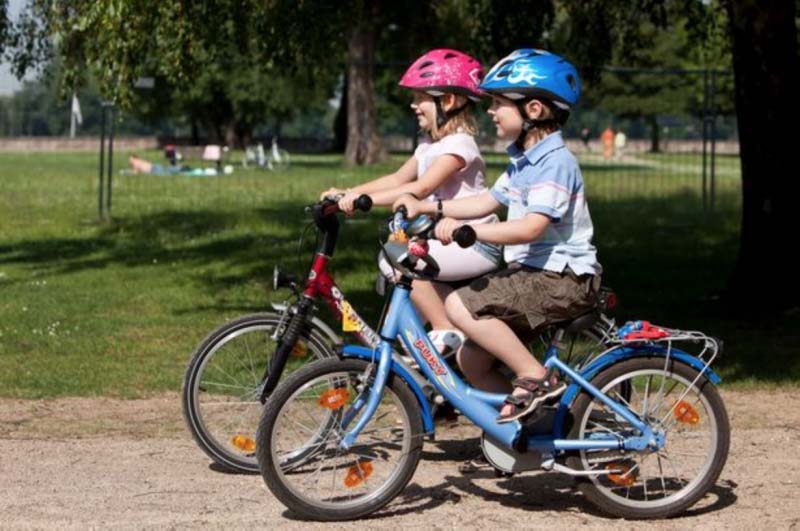 Children often maintain a J-spine on bikes without too much trouble. Children’s bikes are rarely designed for aerodynamic racing, but rather for ease of learning on.
Children often maintain a J-spine on bikes without too much trouble. Children’s bikes are rarely designed for aerodynamic racing, but rather for ease of learning on.
A frame that is too small can cause you to scrunch up, tuck your pelvis, and round your spine. A frame that is too large can pull your shoulders too far forward to reach the handlebars. When your handlebars are in the wrong place and you rest a lot of weight on them, you may create shoulder and neck tension from bracing yourself continuously.
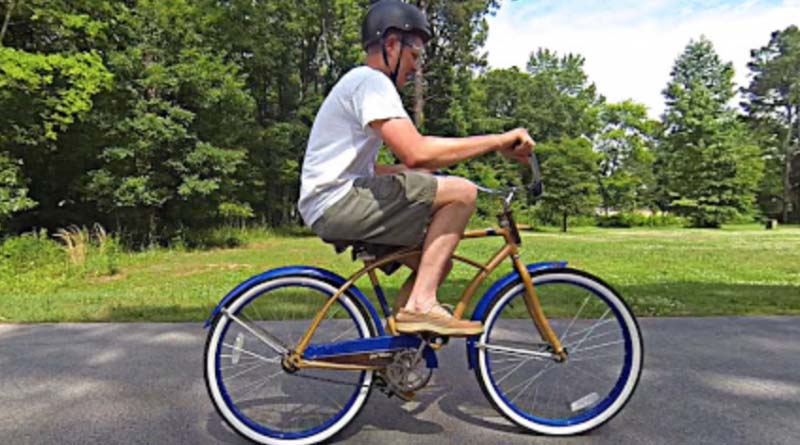
This rider’s bike is too small for him, resulting in a tucked pelvis and rounded spine.
If you are exceptionally tall, you may find it difficult to find a frame that is tall enough to fit you. If you need to lift your seat to its max to create enough legroom for yourself, consider also lifting your handlebars. There are extensions that can be attached to the stem of the handlebars, to bring them closer or farther away, as well as to add height. Your frame needs to be long enough to comfortably reach between seat and handlebars without hitting your knees or scrunching your torso.
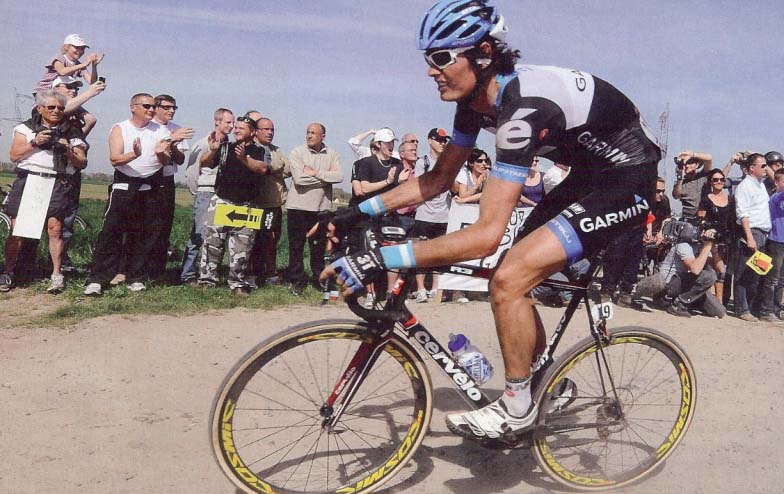
This tall rider is having trouble fitting onto a too-small frame—the distance between the handlebars and seat is too short for his torso to fit without buckling at the spine.
For smaller-than-average adults, it is sometimes difficult to find a petite frame that allows you to lower the seat enough to reach the ground, without this causing the handlebars to be uncomfortably out of reach. Again, there are adjustable stems available for handlebars that are shorter than average, or can tilt the handlebars closer to you. With many bike seats, you can also adjust the seat position horizontally, and it may be easier to slide the seat closer to the handlebars than to bring the handlebars closer to the seat. Just make sure that your seat isn’t so far forward that pedaling becomes awkward or uncomfortable.
How well does your bike fit you? What has your experience been riding different kinds of bicycles? How good is your posture when you ride? Please do share!
Join us in an upcoming Free Workshop (online or in person).
Find a Foundations Course in your area to get the full training on the Gokhale Method!
We also offer in person or online Initial Consultations with any of our qualified Gokhale Method teachers.


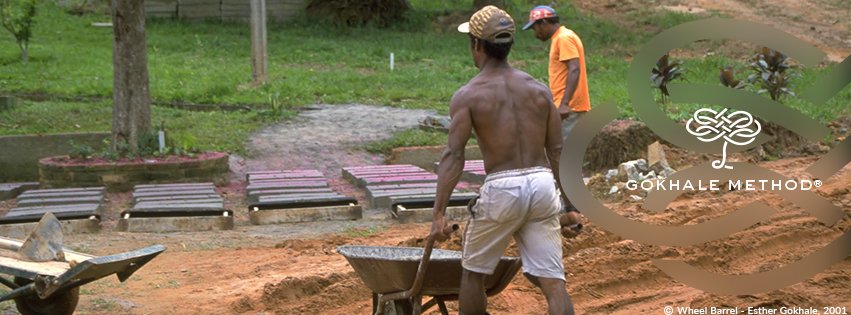
Comments
Thank you for the great post
Thank you for the great post Esther. I vote for hip-hinging as my favorite Gokhale advice, it has changed my life for a few years now, and it has made bike-riding comfortable and healthy again.
I would add that pedaling in a 'standing' posture (on a normal sitting bike) can also be very comfortable to mix in with proper hip-hinged sitting.
Tony
Very true!
Very true!
I bought a new bike a couple
I bought a new bike a couple of years ago and ended up selling it again (and buying a camera instead...).
I tried to hip-hinge, but the handlebars were quite low, so I ended up craning my neck which led to problems in that area.
The handlebars were also fairly straight across, with grips designed that the hands were bent right back at the wrist with all the weight on the heel of the palm. This also led to problems for me (I work a lot on computer with mouse, so my wrists are often, and easily, eh, challenged).
Re Seats: I tried a few and didnt manage to get any that suited.
If you hip-hinge on an average bike (say something between a city bike and a cross-bike or racer), I'd imagine your 'seat' would be at about the same angle as someone who is sitting 'normally' on a racer. So it is possible that a saddle designed for a racing bike would suit someone hip-hinging on a normal bike (anyone out there tried that?)
* by 'city bike' there, I
* by 'city bike' there, I meant one of those comfort cruiser type bikes.
Thank you for the great
Thank you for the great information! Will there be any future articles addressing kayaking and kayak seats?
Great idea! I'll have to
Great idea! I'll have to gather some knowledge for this...anyone out there willing to contribute experience / pics / an article?!
I've been thinking the same
I've been thinking the same thing about kayaking and SUPing. On the SUP I can change positions from sitting, kneeling to standing but the kayak I'm just sitting and obviously sitting quite poorly in this shot!
The SUP is much easier to attain a proper stand and even stack sit. . .
It's all a work in progress tho as the SUP is new to me and as I become more comfortable with balancing on it, the less I will likely grip my feet. Currently my biggest issue is that in fear of falling. . .I contract and tighten my plantar fascia and later feel much tension there and also in what I think is my glut med areas.
As with all things water and boats, it seems that the proper paddle type and length are important for maintaining spinal health as if the paddle is too short there's a tendency for forward leaning or over reaching. Most of my kayak paddling is done on lakes and rivers with some to no current. This implies a different paddle style than whitewater. I'm still experimenting to find the best one for me. There are low and high profile blades depending on the type of paddling one does. Low profile shaped ones are for the more casual, cruising along sort of paddler versus the high profile paddles for those wanting more speed and digging deeper into the water with greater strength of pull. And the stiffness of the blade can change how much pressure is applied to the force on the water versus the force on the paddler's muscles.
I'm investigating now the ergonomics of a bent shaft lightweight fiberglass paddle that is supposed to allow better wrist positions and create less load on the shoulders. These paddles tend to be upwards of $300, but ya get what you pay for and I'd rather pay this much for a paddle then to a therapist to fix my mistakes. :D
Most of all I want to work towards the best Gokhale method posture I was taught to maintain! This way I know I can exercise and have fun and not endanger my body.
Any pictures of men
Any pictures of men maintaining proper posture on a bike? Maybe in Part II...
I haven't been on my bike in 5 years, not necessarily because of back pain, more due to lack of time. This post is perfectly timed, though, as I was planning to pull the bike out of the barn this weekend for a short ride to see if I could maintain a J spine after I took the Gokhale Foundation course last month.
This article is quite good,
This article is quite good, but could I suggest including a couple of definitions to flesh it out for those of us who aren't as well versed in postural terminology? I could figure out what these meant by the pictures and re-reading various parts, but some quick definitions would have helped out immensely:
- J spine
- Stacksitting
- Hiphinging
Thanks for reminding me that
Thanks for reminding me that not everyone on this list is well-versed in the Gokhale Method. I recommend the book 8 Steps to a Pain-Free Back as background info for what is published here.
Thanks for the bike post! I
Thanks for the bike post! I'm looking forward to more. Since I've gone through a bike posture transformation after my back injury, I'll share.
My back injury recovery exercises have permanently changed the way I ride/race bikes, and it's so good for my back and all the supporting muscle infrastructure. First, I tilt the seat forward ever so slightly (nose downward) This is optional, but helps get into a better hip position, and also gives a slight sensation of falling forward that helps with step 2. Second, and most importantly, instead of "resting" into your handlebars, avoid putting weight on my handlebars whatsoever. Hold your hands in position, but don't rest into them. This has two beneficial impacts. One is that your erector spinae and core muscles become fully engaged and that's what holds you in position, as opposed to upward force through your hands & arms. By taking pressure off your hands though, the back and core muscles are engaged, and it releases pressure from being absorbed by the disks of the back. It also releases pressure from your hands, so the meaty paft of my hands no longer get numb like they used. This whole position makes pedalling much easier too, since the force through the pedals helps hold your torso in the correct position. You'll feel like you're falling forward slightly, and pedaling helps to hold you up, as opposed to pressing into the handlebars for that support. I'll admit this can be tiring on long rides, and takes practice, but it strengthens your back and core muscles, and completely changes the way energy transfers from your body into the bike. Even a short bike ride across town now becomes a core and back muscle strengthening exercise.
In short, hold your forward leaning position but take the pressure off your hands, and notice how your core muscles react.
Dave
Thank you so much for this
Thank you so much for this post! I have been wondering if I am the only one with back problems that also rides a bike!
I have had a similar experience to Dave. A few years ago, I went looking for a new commuter bike that would allow me to sit a little more upright and, after testing so many bikes that I nearly gave up, I settled on the Trek Neko SLX. It is a strange geometry which makes it a little funny looking, but it serves the purpose for me. Bike shope employees, who seem also to be avid riders, don't particularly like this bike or the way I make modifications to the traditional bike riding "stance" (like what Dave described), but I figure they just haven't had to. The Trek Neko isn't what most bikers would call a commuter bike (I think it is called a hybrid), but it is light, has lots of gears (I commute up and down hills), and can take rack mounts, so for my purpose, it works great.
This more upright bike, together with a slight forward tilt of the seat and NO pressure on your hands makes for a much better bike ride for your back. It is often easy to "fall back" into that sagging and curved spine position, but a little practice and awareness will strengthen those core muscles and soon you won't even have to think about it. Like Dave above, I agree that this position transfers energy from your body into your bike and changes pedaling quite a lot (for the better!).
You can ride a bike with a bad back without making it worse!
This is a really interesting
This is a really interesting idea - I will certainly be trying it out and hope some of our readers do also.
There are several crank
There are several crank forward/pedal forward/semi recumbent bicycle brands that are practical and comfortable alternatives to a traditional bicycle.
A crank forward bike has the pedals positioned more forward of the seat. The seat is also a bit lower so that you can put both feet on the ground at a stop position. There is no bending forward to reach the handlebars.
If discomfort from a traditional bike has kept you from cycling check out the bikes from these current companies:
Rans, 3G, Maxarya,Day 6, Townie, Phat Cycles, Fuji,Firmstrong, Micargi Royal.
Every once in a while Ebay / Craig's List has some prenowned but discontinued bikes like Giant Revive, Bike E , Cannondale Bent/EasyRider.
I ride an EVOX crank forward but it is no longer manufactured. Purchased it17 years ago it was a demo bike.
I have been a happy rider since.
Thanks for the information!
Thanks for the information! One thing I've noticed about many recumbents I've seen on the roads is that the seats are particularly poorly designed. I need to check whether there are some brands that have well-designed seats or if there are easy fixes...anyone have experience with this?
I appreciated the informative
I appreciated the informative information RE: bicycling posture. Will you be addressing best/proper positioning of the back for swimmers? Thank you!
This I actually know smething
This I actually know something about, so yes!
This topic was on my mind a
This topic was on my mind a lot these past few days, since I'm considering working as a delivery man for extra cash on the weekend (I'm a student). What a coincidence... The thing that's been bugging me is that I can think of no bike that could allow for a posture both tonic for speed and hills, and upright/J-spined. For example mountain and race bikes are constructed in such a way that the back is rounded when seated, so I often ride my mountain bike hands off the handlebar when cruising, and hands on/butt off when sprinting. Maybe having the back slightly rounded for a small amount of time is not too damaging, like in a squatting position?
I've stumbled on the work of a bike designerwho may have come up with a way to cycle with both an aerodynamic stance and a somewhat healthy posture. The efficiency and road confort of such a device is another debate...It's called the "bird of prey" bike, according to its designer you ride it in a "semi-prone" position, similar to laying down on their stomach at the beach, or swimming brass. Apparently the seat presses on the iliac crest, so no direct pressure on the stomach muscles. Do you think they're on the right path posture-wise?
Thank you for taking the time to read our comments.
Also, I second Connojo1014 on kayak seats, as it is one of my favourite sports but HATE the "ergonomic" slouching seats in modern ones!
And what about motorcycling posture ;)?
Interesting! This is new to
Interesting! This is new to me. I wonder how challenging it is to not sway. The woman above is not doing very well. The man below is managing just fine.
I also wonder about various other relevant factors - safety, efficiency, etc., but since that's not my expertise I leave that to others to evaluate
This looks promising, and I suppose, no more crazy than if this was the standard and you saw an upright as the new variation!
As always, what's critical is to thoroughly understand the basics of good posture - intellectually, visually, and kinesthetically - and then you're in a good position to try it out and judge it for your body. We try (and succeed, in large measure) to provide the basics in our Gokhale Method Foundations course and then support you in further explorations in our continuing education classes.
Johan, I think this article
Johan,
I think this article might have confused people into thinking cycling in the classic racing position on a road bike is bad for the body. It is not. The human body is designed to ride a bike. Yes, it is better to have a fairly flat spine (Google Jens Voigt) and not excessively rounded spine (Google Lance Armstrong) when riding, but a slightly flexed spine while riding is not damaging to the body. The body is way more resilient than most people give it credit for.
Serious riders have problems when they ride for hours every day, year after year, and don't do things to balance their body back out. Over time their body learns having a flexed lumbar spine, excessively flexed thoracic spine, rounded shoulders, and a forward head is normal and they spend all day walking around with these imbalances. This over time will create back, shoulder, and neck problems. But it's not the position of cycling and the act of cycling that is causing the damage, it's that they don't reset their posture after they get off the bike.
Recreational cyclists, like most everyone commenting here, also run into problems with pain from cycling, but it is again not the cycling that is the issue, but the imbalanced and dysfunctional body they bring to cycling. When you are fairly functional, cycling for a couple hours a couple days a week will not cause any harm to your body. The problem is most people are just so dysfunctional that any activity gives them problems - sitting while working on computer, raking leaves, gardening, golfing, playing tennis, going on a run, etc. - none of these activities are too much for a functional body, but a dysfunctional body can have problems sleeping at night!
I hope that makes sense.
I have loved bicyling for
I have loved bicyling for many years, but started getting numb hands a few years ago with a traditional road bike. I tried various fixes, including padded gloves, higher handlebars, bar ends, ergonomic grips, and various bikes, including a Tour Easy recumbent and a Townie cruiser. My final solution was a crank-forward, semi-recumbent bike called the Rans Fusion. The ccombination of the Gokhale training, so I knew what position to look for (and how it feels) and finding the right bike for me has eliminated my numb hands and restored my ability to ride in comfort. Don't give up, it is possible! Steve Quigley of San Jose, CA
Great to hear!
Great to hear!
Deat Esther,should the knees
Deat Esther,
should the knees be rotated outwards? I also noticed that it reduces the strain on my knees if you are placing just the heels on the pedals rather than the front feet like it is normaly advised.
Would love to hear your thoughts on this.
Thank you,
Martin